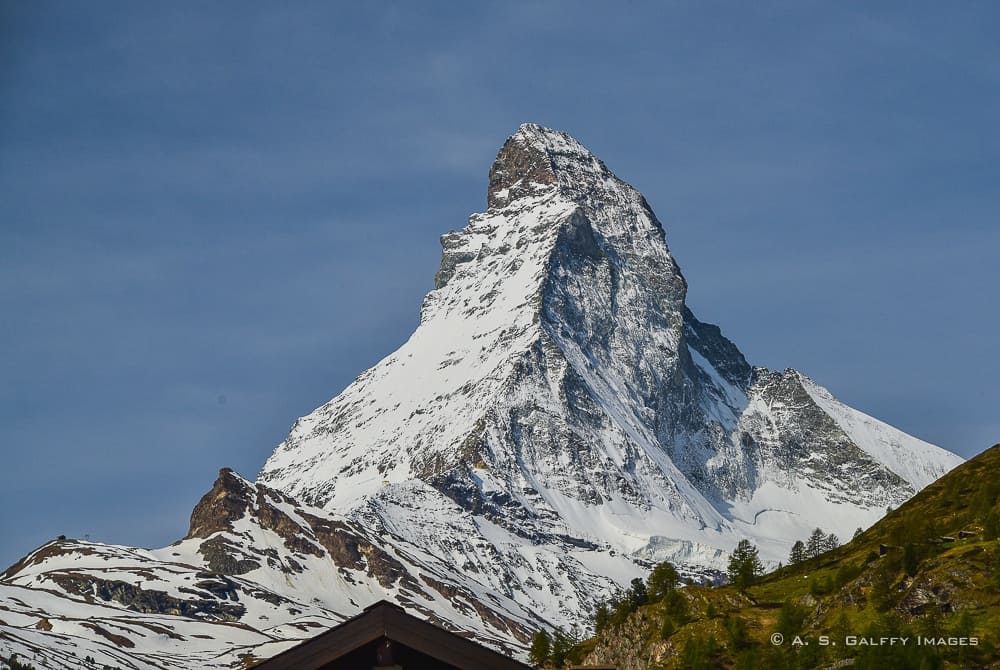Tall mountain peaks have always incited the desire to be climbed. But some peaks are better left untouched. Or at least that’s what the residents of Zermatt thought about conquering the Matterhorn, back in the 1850s. For many years, people believed this mountain was unclimbable.
The huge pyramidal peak that strides between Switzerland and Italy inspired only fear and respect. The superstition that spirits throw rocks down the mountain created even greater fear. At 4,478 meters high, the Matterhorn was better left alone.
Table of Contents
Obsessed with Conquering the Matterhorn

But was there a time in history when humans didn’t obsess over conquering nature? Such was the case of Jean-Antoine Carrel, an Italian mountain climber who lived in a little village on the Italian side of the Matterhorn. His fascination with this mountain peak began taking control over his own mind.
Soon after discovering it, he could think of nothing else but climbing the Matterhorn. Beginning in 1857 Carrel made several attempts to reach the summit. Unfortunately, the Italian side of the Matterhorn was hard to climb, so he repeatedly found himself having to turn back. But Carrel wasn’t the only one who fantasized about the Matterhorn.
Conquering the Matterhorn was not a one-man’s obsession
On the other side of the Alps, in Britain, there was another restless soul who was obsessed with conquering the Matterhorn. Edward Whymper first visited the Alps as an artist commissioned to draw picturesque mountain scenes.
But after seeing the Matterhorn he became a mountaineer and began climbing the western Alps. Whymper’s first attempt to reach the Matterhorn was in 1861 from the village of Breuil, on the south side of the mountain. He tried to reach the summit for nearly three years.

Whymper and Carrel, although fierce competitors, found themselves often on the same team, trying to ascend the mountain. But most of the times they were competing against each other, trying to reach the summit independently.
Between Carrel and Whymper it was a battle of egos. Carrel considered the Materhorn his own mountain and regarded Whymper as an intruder. He was secretly hoping to conquer it alone.
READ NEXT: Aboard the Glacier Express (From Zermatt to St. Moritz)
Whymper, on the other hand, considered Carrel the best climber in the Alps and tried to hire him for what turned out to be his successful ascent. But during the week of their planned attempt, Carrel secretly agreed to guide an Italian team made of four individuals, leaving Whymper out of the loop.
When the Englishman discovered that Carrel was attempting the mountain from the Italian side, he quickly put together a seven-man team in Zermatt and tried to reach the summit from the Swiss side.

The Swiss ridge was a steeper and more terrifying passage and too risky for climbing. But in the end, the British climber together with three compatriots and three mountain guides managed to conquer the Matterhorn. They reached the peak on July 14, 1865, marking the first successful ascent of the peak.

A Short Lived Victory
However, the joy of victory was short lived as only three of the seven mountaineers on his team survived the descent. One man slipped, pulling off three others. Whymper and his two guides, Peter Taugwalder Sr. and Peter Taugwalder Jr. caught the fall, but the rope suddenly broke and the other four guys fell 4,000 feet.
The authorities in Zermatt accused Whymper of cutting the rope and started a long investigation. Although exonerated, the controversy continued. In England the public opinion denounced and condemned the uselessness of the sport of mountaineering.
Europe was in turmoil over this tragedy and one way or another, everyone had an opinion. Sounds familiar? After the Matterhorn accident, Whymper abandoned mountaineering in the Alps, although he continued to climb elsewhere.
Carrel and his Italian team managed to reach the Matterhorn only three days later after the Whymper’s ascent. Disappointed and exhausted, Carrel only stayed at the summit long enough to plant an Italian flag by the side of the English flag planted there by Whymper three days earlier, then descended at once.
Carrel died 25 years later, in 1890, while guiding a party of climbers on the south side of the Matterhorn. Caught in a sever storm, he managed to bring his clients down safely, but he collapsed from exhaustion and died at the foot of the mountain.
READ NEXT: Riding the Cogwheel Train from Zermatt to Gornergrat
The Mountain That Keeps Claiming Lives
After Whymper’s successful ascent, thousands of people have attempted to climb the Matterhorn and more than 500 perished (more than on the Everest, Rainier or the Grand Teton.)

Death’s allegedly heroic nature has always lured those who never witnessed its horror. Walking past the tombstones of the people who paid this exorbitant price makes you wonder of the human mind.
Planning a trip to Switzerland? You may find these posts useful:
10 Days in Switzerland – the Perfect Scenic Train Itinerary
How to Visit Harder Kulm – Interlaken’s Local Mountain
Best Things to Do in Interlaken for Couples
How to Visit the Jungfraujoch
Lucerne to Interlaken Via the Golden Pass






Anda Galffy
I agree with you entirely, Samiya. I never understood people’s obsession with risky mountain climbing.
Sally@Toddlers on Tour
I am always in awe of early pioneers who conquered nature without the know how of modern technology. Through their efforts it paves the way for us to today to have a go without the mistakes.
Corinne
Anda, I certainly admire mountain climbers, however, it is not something I’m interested in doing!
Anda Galffy
Me neither, Corinne, not this kind of mountain climbing anyway.
Mary {The World Is A Book}
What an interesting history of the Matterhorn! I learned quite a bit from this knowing next to nothing of this famed mountain and only that the Disneyland ride was based on it 🙂 Thanks! Love that first picture!
Anda Galffy
Thank you, Mary. I’m glad if I could provide some new information about the Matterhorn.
Ruth
Anda,
Interesting story. I have read about people who have climbed higher mountains (and are in top physical shape) but struggle climbing this mountain. Just by looking at it, I can understand how the climb to the top is very technical. Makes me think about the motivation behind people who practice this sport.
Anda Galffy
I think this is more an obsession than motivation, Ruth, and I often wander if it’s only driven by pride or there is more to it.
Lauren | Justin Plus Lauren
What a fascinating history, thank you so much for sharing! Have a wonderful weekend 🙂
Laz
Better to look at it from a distance!